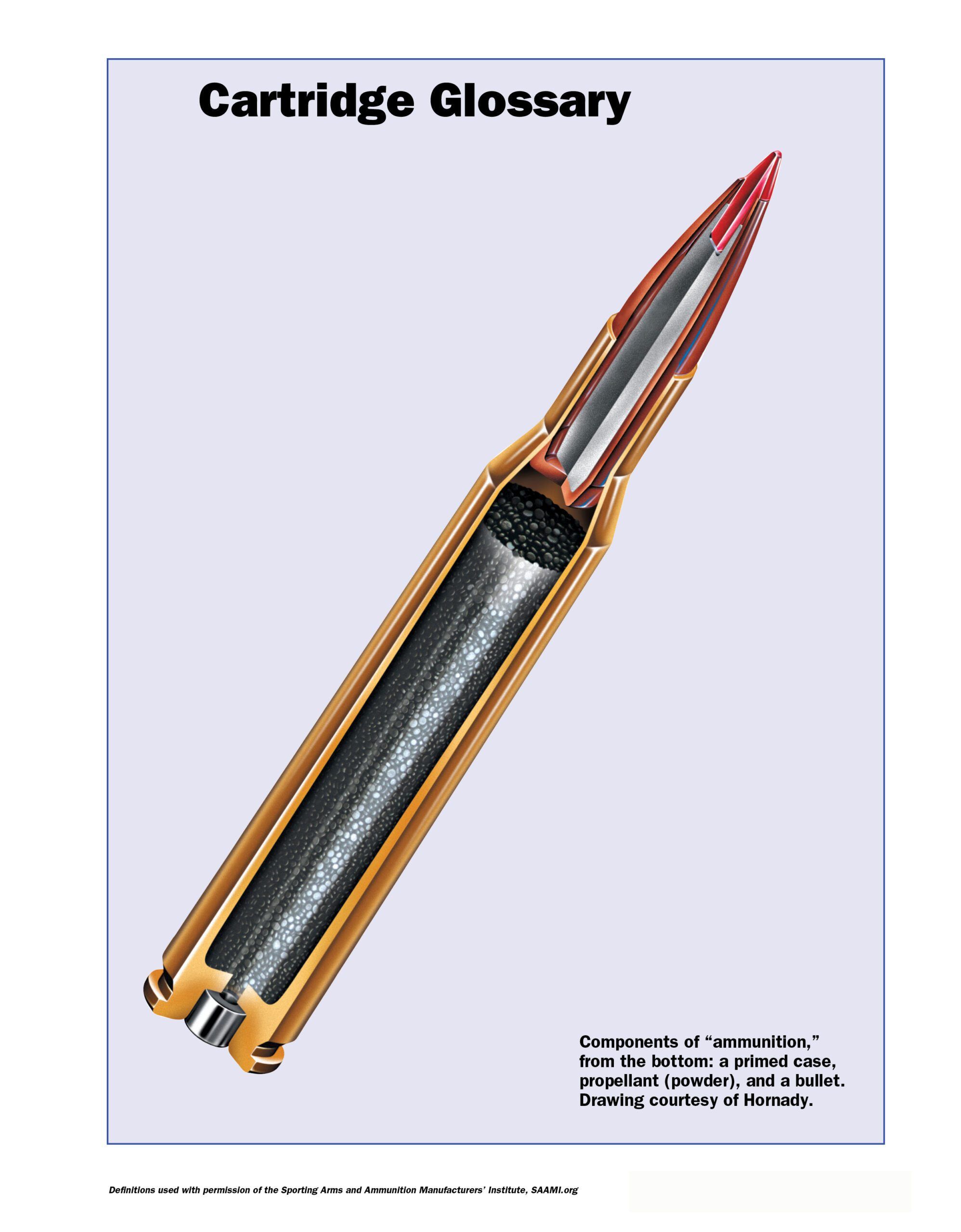Not known Incorrect Statements About Ammunition Pro Llc
Not known Incorrect Statements About Ammunition Pro Llc
Blog Article
Some Known Incorrect Statements About Ammunition Pro Llc
Table of ContentsGetting My Ammunition Pro Llc To WorkGetting The Ammunition Pro Llc To WorkThe Facts About Ammunition Pro Llc RevealedAmmunition Pro Llc Things To Know Before You Get ThisThe 9-Second Trick For Ammunition Pro Llc
The standard parts of ammunition are the exact same for rifle, pistol, and shotgun ammunition. Today we're looking at the what the basic parts of ammo are and exactly how they work with each other to fire a round.The bullet is seated in the open end of the instance. When you terminate a bullet out of a semi-auto gun, the weapon's extractor raises the situation from the firing chamber and it flies out of the weapon.
A weapon's firing pin strikes a cartridge's guide. The primer is situated in the edge of the situation of a rimfire cartridge.
Little Known Questions About Ammunition Pro Llc.
The two usual kinds of primers in centerfire cartridges are Berdan and Boxer primers. Gunpowder following to the situation that typically contains it. Powder, also called propellant or gunpowder, is a fast-burning chemical blend. The guide explosion sparks it. It is usually a combination of saltpeter, charcoal, and sulfur.
We call the projectiles for shotshells, which we fire with shotguns, slugs and shot. A slug is one strong piece, generally constructed out of lead. Shot is a group of pellets constructed of lead, steel, bismuth, or tungsten alloy. Shot pellets can be available in different sizes and quantities. Currently that you have a fundamental understanding of the basic parts of ammo, you can feel a little bit much more confident in just how your weapon and ammunition feature!.
Getting My Ammunition Pro Llc To Work
Stay up to date with Unique Offers, Breakthrough Notice of Sales, and Shop Occasions
Enjoyable fact: Grains are utilized to describe the mass of a bullet due to the fact that right back in the early days of guns, it was a dispenser's device of measurement, and a common denominator was needed to figure out exactly how much cause utilize to make cast lead bullets (Ammo Retailer). 'Grains' as an unit of step for weight copulates back to ancient times, and represents the weight of a grain of wheat

(https://zenwriting.net/ammunitiondde/ammunition-the-foundation-of-your-shooting-experience)For reference, the weight of a paper clip has to do with 16 gr. We understand that grains are a procedure of mass, and more = larger, and heavy is great? Yes, hefty is good, but mass of the projectile isn't the only thing you need to think about when choosing a round for your firearm.
The 4-Minute Rule for Ammunition Pro Llc
This spin is created by grooves cut or hammered into the interior of the barrel, which are referred to as 'gunning'. Enjoyable fact, this is the origin of the term "Rifle" ex. A rifled firearm vs. smoothbore firearm. The result this spin has on projectiles is a maintaining one the bullet turning maintains the nose directed right, in the very same method that a perfectly spiraled football toss is going to be a lot a lot more stable and precise in trip than an unsightly duck, end over end throw.
How does this connect to grain weight? Picture you're on one of those play ground slide carousels, the ones with bars you hold on to while it rotates.
The exact same result takes place with bullets. The much heavier the projectile, the even more effect a much faster spin will have on it.
Ammunition Pro Llc Fundamentals Explained
There's one more factor that we have to take into consideration when picking a grain weight for our ammunition. As meant above, bullet velocity, or the speed of the projectile, is a significant aspect when determining the most effective grain weight projectile to make use of. Speed is impacted by a few significant variables, including the type and quantity of propellant (gunpowder), barrel length, and bullet weight.

One of the most usual grain weight rounds for 9x19mm cartridges are 115gr and 124gr. These are generally lead core, completely jacketed (FMJ) rounds. Both of these grain weight cartridges will perform well in manufacturing facility 9mm pistols, to typical handgun ranges (up to 50 backyards). 115 grain rounds are one of the most common (and as a result least costly).
Report this page